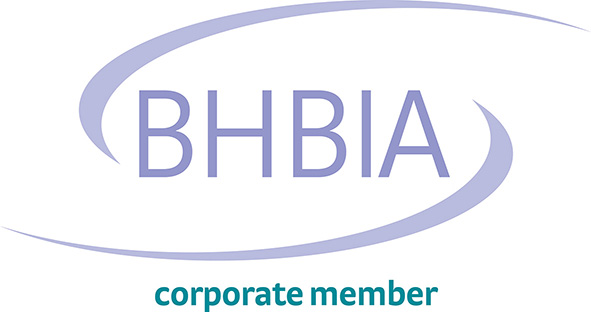Market Research Glossary
Market Research Glossary
There are currently 105 names in this directory beginning with the letter M.
M-Commerce
Mobile commerce, also known as m-commerce or mcommerce, is the use of wireless handheld devices like cellphones and tablets to conduct commercial transactions online, including the purchase and sale of products, online banking, and paying bills. The use of m-commerce activity is on the rise.
Machine-Readable Data
Machine-readable data is data (or metadata) in a format that can be easily processed by a computer.
macroenvironment
A macro environment is the condition that exists in the economy as a whole, rather than in a particular sector or region.
macromarketing
It refers to how product, price, place, and promotion—the four Ps of marketing—create demand for goods and services, and thus influence what products or services are produced and sold.
Mail Panel
A type of consumer panel where participants have agreed to complete a limited number of mail surveys each year.
Mail Questionnaires
Questionnaires can be mailed out to a sample of the population, enabling the researcher to connect with a wide range of people.
Mail Survey
A survey where respondents are asked to complete a questionnaire (unaided) and return it to the sender either by post or e-mail.
Mailout Rate
The amount of surveys sent to respondents. Monitor the server capacity when sending out survey invitations.
Main Testing Effect
an experiment has a systematic effect on the main experimental results, regardless of what happens between the measurements.
Male Head-of-Household (MHH)
The man most responsible for maintaining the household. May or may not be the primary wage earner.
Mall Intercept Interview
A mall intercept interview is a research method in which mall visitors are stopped for conducting an interview.
Mall-Intercept Interviewing
A type of central location interviewing where respondents are approached (or intercepted) in high traffic locations such as grocery stores or shopping malls.
Mann-Whitney U Test
The Mann–Whitney U Test is a popular test for comparing two independent samples. It is a nonparametric test, as the analysis is undertaken on the rank order of the scores and so does not require the assumptions of a parametric test. ... The logic of the test can be seen by an example.
Marginal
Marginal refers to the focus on the cost or benefit of the next unit or individual, for example, the cost to produce one more widget or the profit earned by adding one more worker.
Market
business or commercial activity; the amount of buying or selling of a particular type of goods.
Market Research
Market research is the process of determining the viability of a new service or product through research conducted directly with potential customers. Market research allows a company to discover the target market and get opinions and other feedback from consumers about their interest in the product or service.
Market Research Society (MRS)
The Market Research Society (MRS) is the world's leading research association where data, insight and evidence matters.
Market Research Society Australia (MRSA)
The Australian Market and Social Research Society Limited (AMSRS) is a professional membership body which represents approximately 2,100 market research professionals who are committed to strengthening the standards and awareness of both market and social research in Australia.
Market Segmentation
Market segmentation is the process of dividing a target market into smaller, more defined categories
Market Share
Market share is the percent of total sales in an industry generated by a particular company. Market share is calculated by taking the company's sales over the period and dividing it by the total sales of the industry over the same period.
Market Simulation
The effects of a new product's advertising, price changes, and more can be measured with controlled variables.
Market Test
The Market Test is an experiment conducted before the commercialization (launch) of a new product to find out the facts about the product .
Marketing
It is a tool used by the companies to check the viability of their new product or a marketing campaign before it is being launched in the market on a large scale.
Marketing & Opinion Research
The function that links the consumers, customers, and public to the marketer through information — information used to identify and define marketing opportunities and problems; generate, refine, and evaluate marketing actions; monitor marketing performance; and improve understanding of marketing as a process.
Marketing Concept
It is preoccupied with the idea of satisfying the needs of the customer by means of the product as a solution to the customer's problem (needs).
Marketing Decision Support System
A system used to manipulate a collection of data to interpret and explore potential business scenarios in order to make management decisions.
Marketing Information System
The Marketing Information System refers to the systematic collection, analysis, interpretation, storage and dissemination of the market information, from both the internal and external sources to the marketers on a regular, continuous basis.
Marketing Mix
A marketing mix includes multiple areas of focus as part of a comprehensive marketing plan. The term often refers to a common classification that began as the four Ps: product, price, placement, and promotion.
Marketing Research
Marketing research is the systematic gathering, recording, and analysis of qualitative and quantitative data about issues relating to marketing products and services.
Marketing Research Association (MRA)
The Marketing Research Association (MRA) was a non-profit, membership trade association, incorporated in New York state.
Marketing Strategy
It refers to a business's overall game plan for reaching prospective consumers and turning them into customers of their products or services.
Markov Model
It is a stochastic model used to model randomly changing systems. It is assumed that future states depend only on the current state, not on the events that occurred before it.
Matching
The term matching refers to the procedure of finding for a sample unit other units in the sample that are closest in terms of observable characteristics.
Mathematical Analysis of Perception and Preference (MAPP)
A technique to chart the perceptions and preferences a consumer has regarding a product using a visual representation such as a map or graph.
Maturation
Changes in experimental subjects that take place during an experiment that may affect their responses to the experimental variables.
Mean
The mean is a simple average gained by adding together the sum of all the responses to a question, and dividing them by the number of responses.
Mean Square Error
It provides a statistic that allows for researchers to make such claims. MSE simply refers to the mean of the squared difference between the predicted parameter and the observed parameter.
Measure of Location
Measures of location describe the central tendency of the data. They include the mean, median, and mode.
Measurement
Measurement is the process of observing and recording the observations that are collected as part of a research effort.
Measurement Error
Measurement error is then the difference between the value of a characteristic provided by the respondent and the true (but unknown) value of that characteristic.
Measurement Scale
It is a device that assigns numbers to objects, events or people according to a set of rules.
Measurement Timing Error
It occurs in experiments when there are changes in the dependent variable that are caused by taking measurements at different times.
Measures of Central Tendency
Measures of central tendency tell researchers where the center value lies in the distribution of data. It is common to hear people describe measures of central tendency as “the average” score or point in a particular group because it describes what is typical, normal, usual, or representative.
Measures of Location
It describes the central tendency of the data. They include the mean, median and mode.
Measures of Variability
Measures of variability (or dispersion) are those that indicate the spread of a distribution. Examples of measures of variability are: range, interquartile range, variance, standard deviation, and coefficient of variation.
Mechanical Observation
When some form of mechanical device records the behavior of interest, e.g. a people-meter recording who watches what TV programs.
Media
Media is the plural of medium. Magazines, newspapers, radio, television, and billboards are referred to as advertising media.
Media Research
Research survey that segments the people based on what television programs they watch, radio they listen and magazines they read.
Median
The median is a method of gaining an 'average' from a set of data. First, the data must be arranged in terms of increasing magnitude, and then the middle value is selected.
Methodological Log
A recorded account of the exact process and times used to conduct a humanistic inquiry. Biases or distortions need to be especially noted.
Methodology
A description of the way in which the data is collected for part or all of a research project.
Metric Data
Metric data is what most people mean when they talk about 'numbers', the sorts of numbers we collect when we measure something.१
Metric Scale
A metric scale measures quantitative characteristics or variables. The term metric scale summarizes interval scales, ratio scales and absolute scales.
Metropolitan Statistical Area (MSA)
It is the formal definition of a region that consists of a city and surrounding communities that are linked by social and economic factors, as established by the U.S. Office of Management and Budget (OMB).
Microsite
A microsite is a brand-specific website (or a single web page) that companies use to promote their individual products, events, or campaigns.
Mini Group Discussion
mini group discussion consists of 4-5 respondents and applied foremost for proficient interviews and/or B2B research, to provide the respondent a sufficient opportunity to express their opinions.
Minigroup
Mini groups are similar to a focus group only smaller they can contain between 2 and 5 people. Mini groups are a qualitative research method. They may be used when the topic area is difficult and may need to be explained to respondents more clearly.
Mix Mode Data Collection
Employing various research techniques for one research project. This can be a time consuming and costly technique.
Mode
It is a measure of central tendency that identifies the most frequently occurring value in a set of values.
Modeling
Models explain how things work. Any explanation of how a market works is, by definition, a model. We cannot estimate anything without models.
Moderated E-mail Group (MEG)
Where a group of pre-recruited research participants are all in email contact with a facilitator and the facilitator emails questions to them on a particular subject.
Moderator
It is someone who leads (but does not influence the outcome of) group discussions and/or in-depth interviews.
Moderator Guide
It is a document created to conduct a research session. The content of a guide will vary depending on the type of session it's made for. Some are scripts with step-by-step instructions, while others consist of topics and questions.
Monadic Evaluation
A study or part of a study in which the respondent evaluates only one stimulus on its own merits, rather than comparing it to other test stimuli. The stimulus can be a product, concept, advertisement, etc.
Monitor
It is a quality control measure that may involve observing, auditing and checking the interviewing to ensure that the required procedures are followed and to give feedback and instruction to the interviewers. Monitoring is one means of validating or giving assurance that. data is collected from qualified respondents who are interviewed under prescribed conditions. Monitoring can be done in person for face-to-face interviews or by phone for telephone interviews.
Mono-polar Scale
A type of categorical, non-comparative scale that is similar to a semantic differential scale except that instead of having two opposing adjectives, there is only one adjective in between a sequence of positive and negative categories.
Mood Board
A Mood Board is a collage of images that managers use to illustrate an idea, an inspiration of style.
Mortality Error
It occurs in experiments when changes in the dependent variable are caused by experimental units no longer being part of the experiment.
Motivational Research
It is a term used to refer to a selection of qualitative research methods that were designed to probe consumers' minds in order to discover the subconscious or latent reasons and goals underlying everyday consumption and purchasing behaviors.
Moving Average
A moving average is used to 'smooth' the data and remove the variations produced by seasons, trade cycles and random variations.
Multi-Client Research
It is focused on major industry trends and topics. Multiple companies fund, influence, focus, and receive the research results, enabling them to obtain business-critical information at a fraction of the cost of conducting the study on their own
Multi-Dimensional Scaling
It is a statistical technique that allows researchers to find and explore underlying themes, or dimensions, in order to explain similarities or dissimilarities (i.e. distances) between investigated datasets.
Multi-Item Scale
It is designed to measure the respondent's attitude towards more than one attribute related to the stimulus object. It is a rating scale comprising of multiple items, where each item is a single question or a statement that needs to be evaluated.
Multi-Stage Sample
It is defined as a sampling method that divides the population into groups (or clusters) for conducting research.
Multi-Variate Techniques
Forms of statistical analysis that are used where there are two or more dependent variables to be analyzed simultaneously.
Multicollinearity
It is a statistical phenomenon in multiple linear regression analysis where two (or more) independent or predictor variables are highly correlated with each other, or intercorrelated.
Multidimensional Scaling (MDS)
It is an alternative to factor analysis. It can detect meaningful underlying dimensions, allowing the researcher to explain observed similarities or dissimilarities between the investigated objects.
Multiple Choice Questions
Multiple choice questions are fundamental survey questions which provide respondents with multiple answer options.
Multiple Cross-Sectional Design
A type of research design where two or more samples are drawn from a population of interest, each sample being only drawn once.
Multiple Regression Analysis
Regression analysis is a common technique in market research that helps the analyst understand the relationship of independent variables to a dependent variable. More specifically it focuses on how the dependent variable changes in relation to changes in independent variables.
Multiple Response Question
The respondents are expected to select one or more than one option from the multiple answer options.
Multiple Time Series Design
A type of quasi-experimental design where a series of periodic measurements is taken from two groups of test units (an experimental group and a control).
Multiple Time-Series Design
The experimental group is exposed to treatment and then another series of periodic measurements is taken from both groups.
Multivariate Analysis
Multivariate' means 'many variables' and in the context of marketing it usually means analysing multiple variables from customer records to get a deeper understanding of the customer base.
Mutually Exclusive Categories
Categories are mutually exclusive when objects can be placed into one category and no other.



